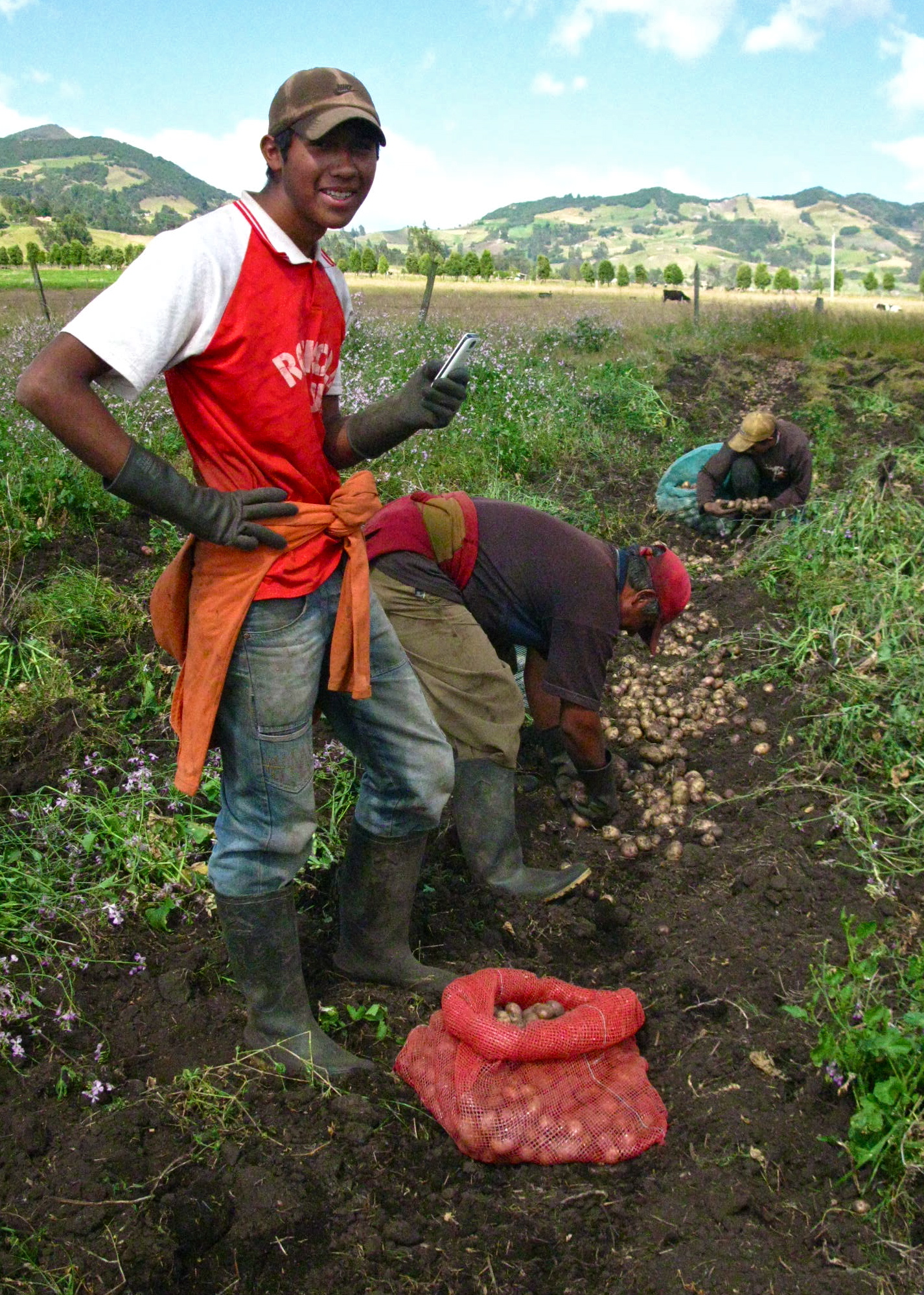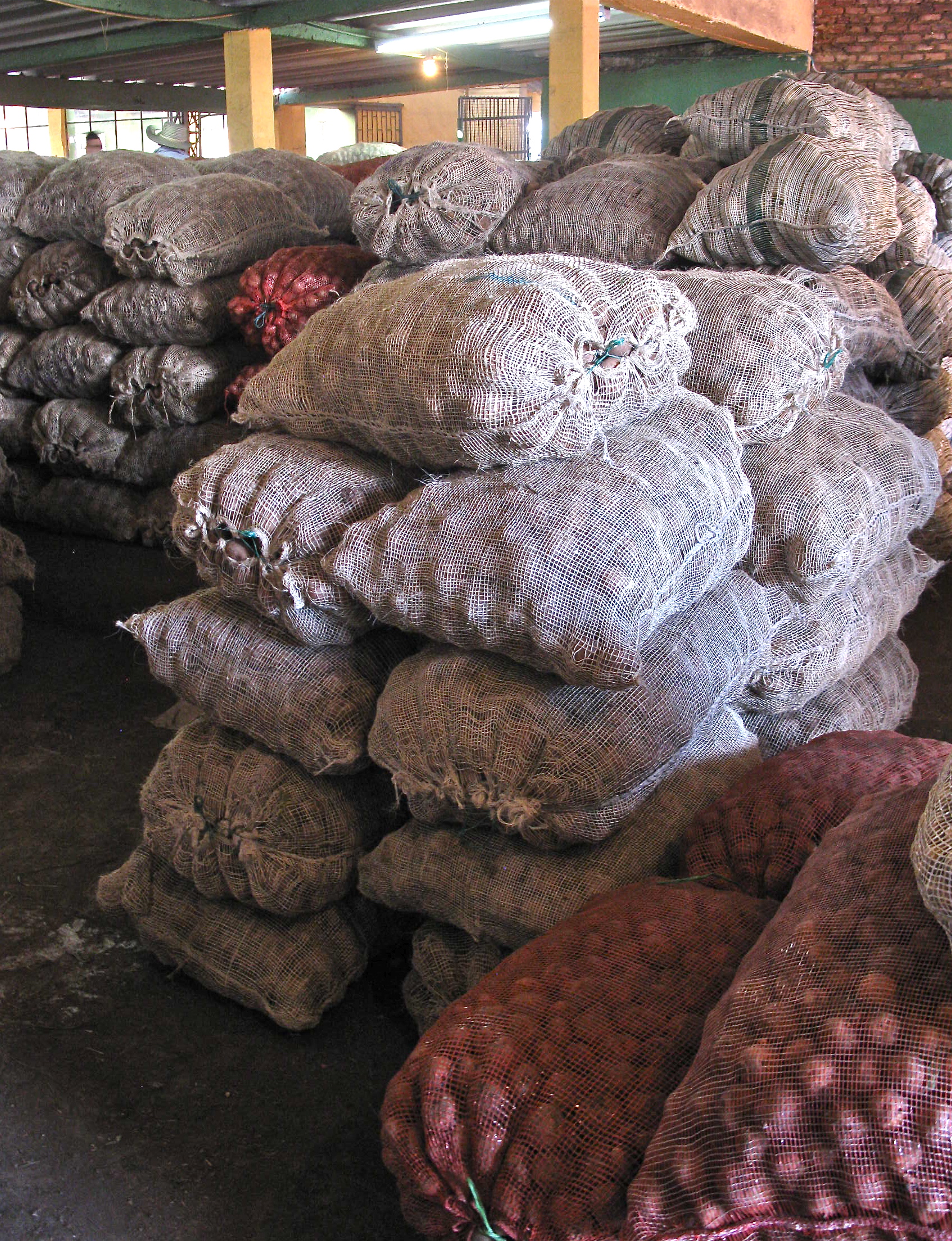 Climate change impacts are posing the need to redefine the way in which we understand and approach development challenges. Ensuring food security amidst a changing climate is at the top of developing countries agendas. But most importantly and palpably, is a matter of survival for the millions of farmers, fishers, herders and foresters whose livelihoods are highly vulnerable to the occurrence of extreme events, changing temperatures and unpredictable seasonality, among other stressors.
Climate change impacts are posing the need to redefine the way in which we understand and approach development challenges. Ensuring food security amidst a changing climate is at the top of developing countries agendas. But most importantly and palpably, is a matter of survival for the millions of farmers, fishers, herders and foresters whose livelihoods are highly vulnerable to the occurrence of extreme events, changing temperatures and unpredictable seasonality, among other stressors.
Within resource-dependant contexts affected by more frequent and intense climatic manifestations, redefining the approach to food security involves embracing the notions of change and transformation. This includes the adoption of ‘climate-smart’ practices (1), the use of emerging tools and technologies, and in some cases, the return to ancestral or indigenous customs to better prepare for, withstand and recover from climatic impacts.
Above all, it involves identifying new ways of solving problems, of making decisions, of accessing and processing information, and of applying knowledge to agricultural practices in order to achieve more resilient production systems.
Emerging experiences from the field suggest that Information and Communication Technologies (ICTs) are playing an increasing role as enablers of change and transformation within vulnerable contexts. Mobile phones, radio, Internet-based applications and social media are being integrated as part of strategies to adapt to, mitigate, and monitor climate change, especially within agricultural communities.
How can we ‘connect the dots’ between ICTs, food security and resilience?
These connections are illustrated through examples in the following table:
|
Sub-sector |
Examples of ICT POTENTIAL |
Expected Impact on FOOD SECURITY |
|
AGRICULTURE |
|
|
|
LIVESTOCK |
|
|
|
FISHERY |
|
|
|
AGROFORESTRY |
|
|
The realisation of ICTs’ potential towards enhanced food security and resilience is linked to a series of factors that include:
- acknowledging the role of ‘knowledge infomediaries’ or facilitators (e.g. extension workers, local trained professionals and youth) who can bridge the divide between scientific knowledge and technical climate change data, and their practical application in the field,
- building capacity of local stakeholders to benefit from the full potential of ICT tools (e.g. identifying and interpreting relevant information, establishing contact with broader agricultural networks and experts, exchanging technical information with local and external peers),
- raising awareness among policy makers on the importance of integrating ICT tools into climate change strategies, as well as into broader poverty reduction programmes that tackle the multiple stressors that threaten food and nutrition security at the local level,
- tackling issues of access and connectivity in remote rural areas, in order to ensure that developing country farmers, fishers, herders and foresters have access to a diverse range of ICTs services.
 There is an important body of traditional knowledge and emerging adaptation and mitigation experiences that developing country communities can share and disseminate with the help of ICT tools. But making information available is not enough.
There is an important body of traditional knowledge and emerging adaptation and mitigation experiences that developing country communities can share and disseminate with the help of ICT tools. But making information available is not enough.
The main challenge for ICTs in regards to food security goes beyond the provision of information. It lays in ensuring that the knowledge and information that are made available actually reach the appropriate stakeholders, that they are appropriated by local audiences, and most importantly, that agricultural producers are able to apply it or act upon it in order to strengthen their livelihoods.
Ultimately, ICT-enabled information and knowledge should contribute to inform the decision-making processes of local actors, to strengthen their capacity to deal with uncertainty, and to build new bridges of collaboration and exchange towards more resilient, food-secure agricultural systems.
—————————————————————————————–
(1) FAO (2011) defines climate-smart agriculture as “agriculture that sustainably increases productivity, resilience (adaptation), reduces/removes GHGs (mitigation), and enhances achievement of national food security and development goals”. http://www.fao.org/docrep/013/i1881e/i1881e00.pdf
